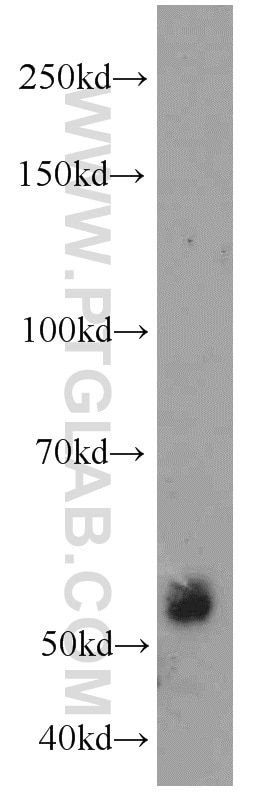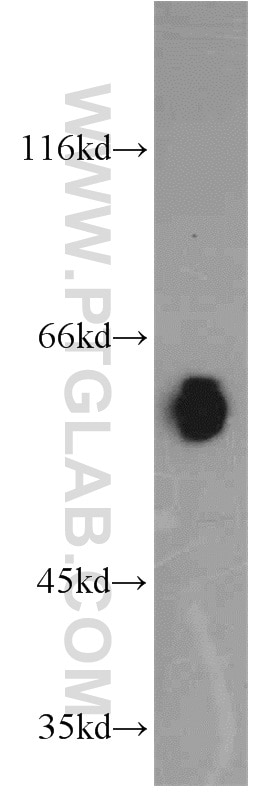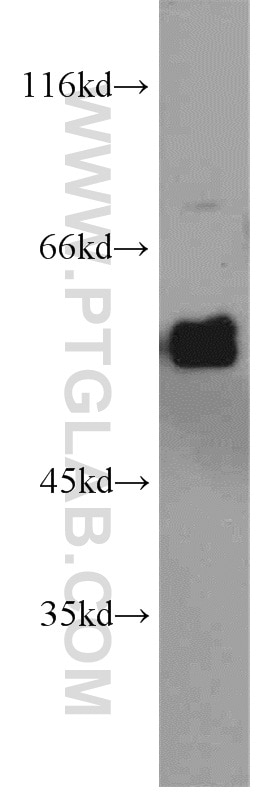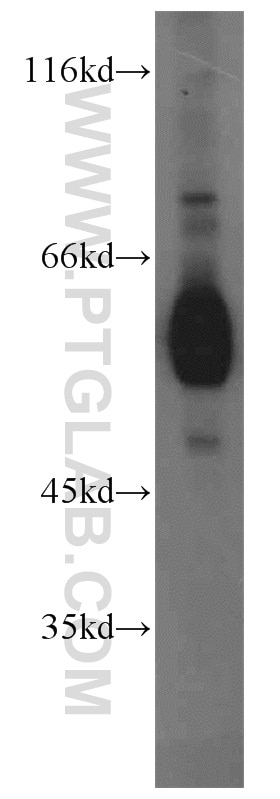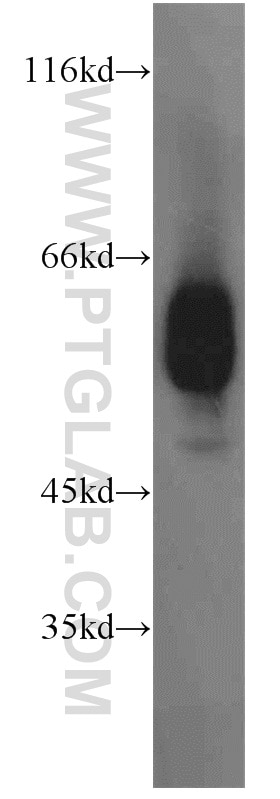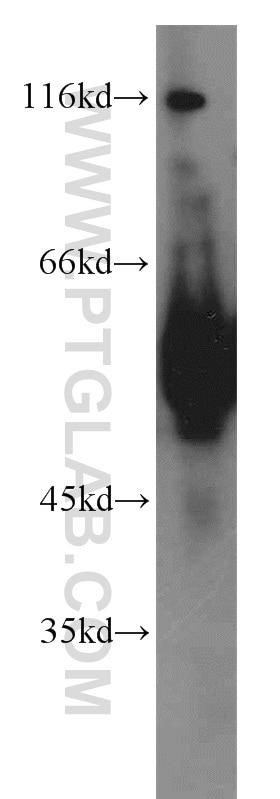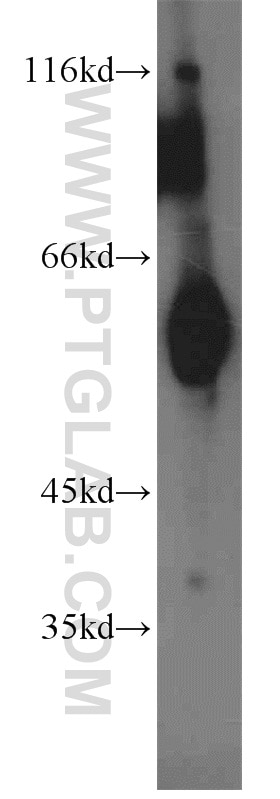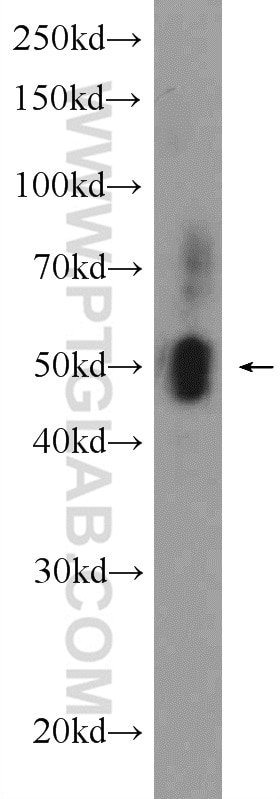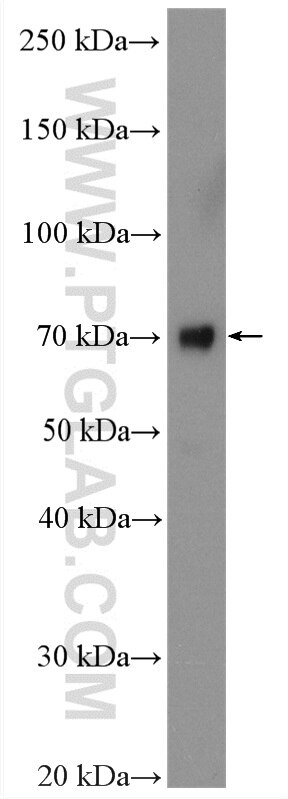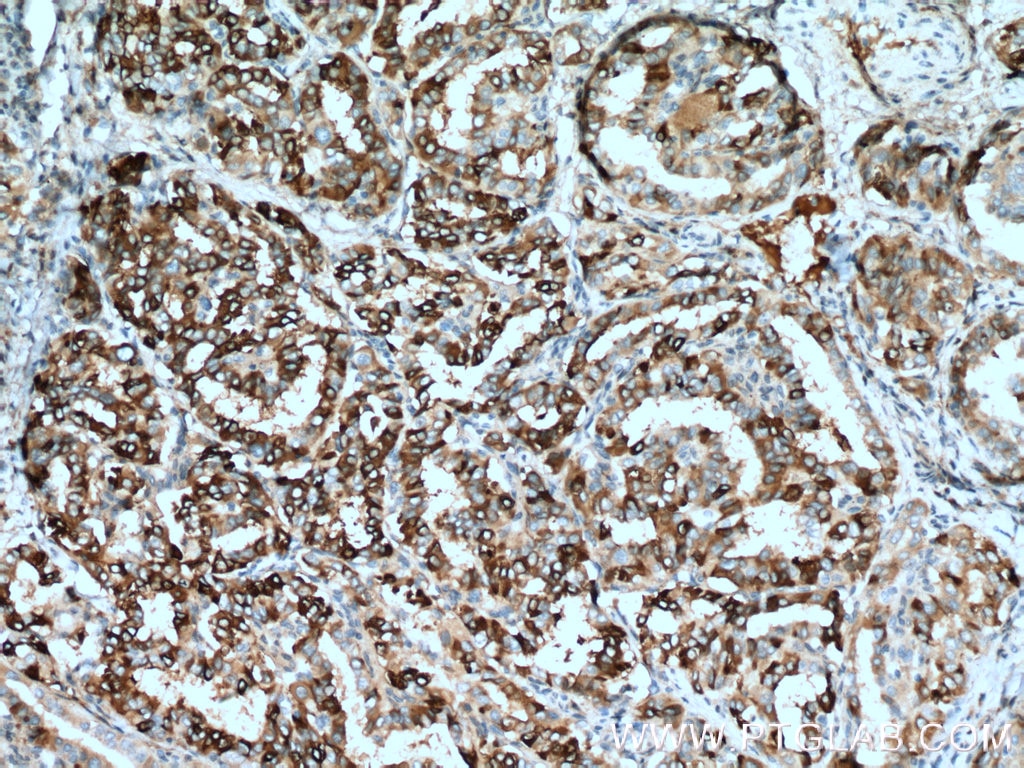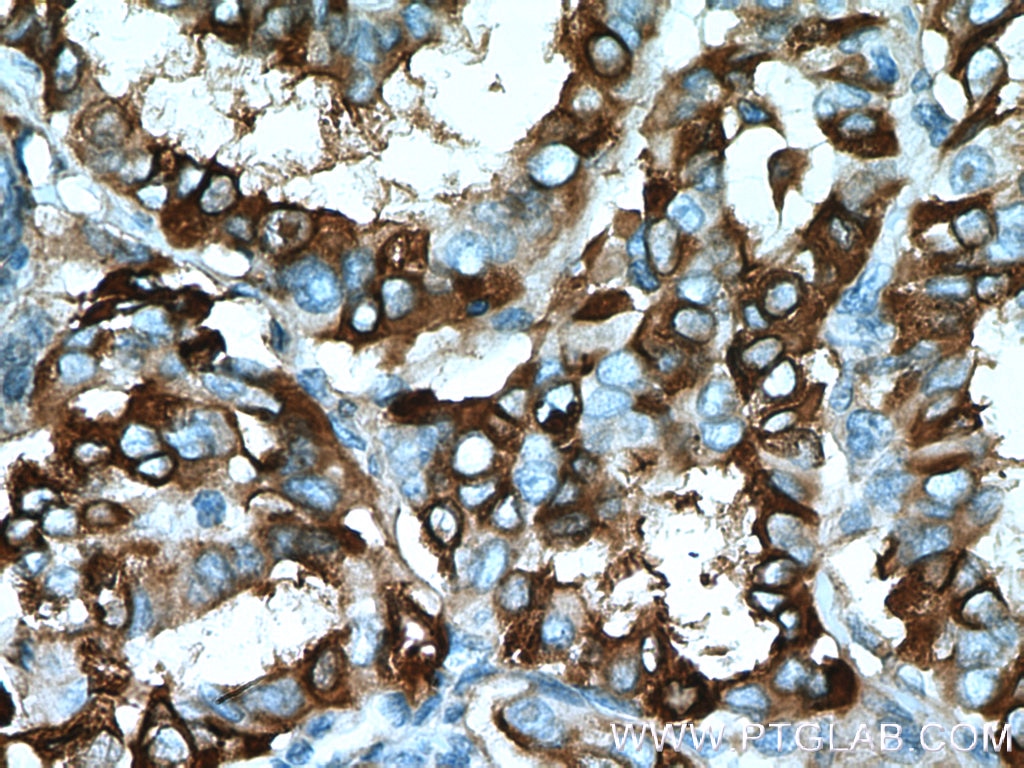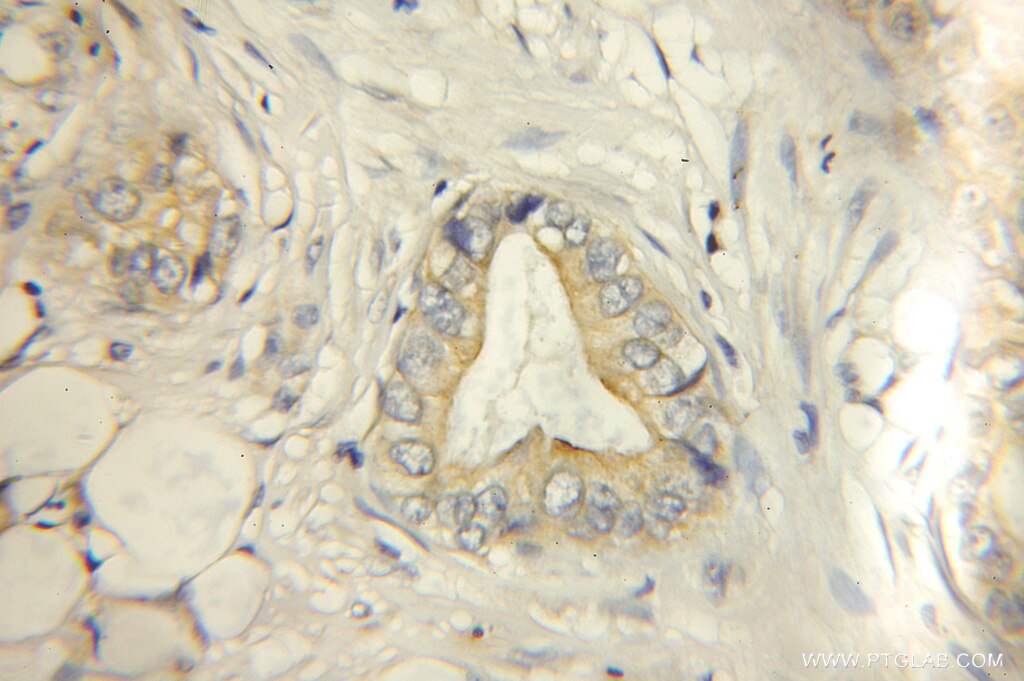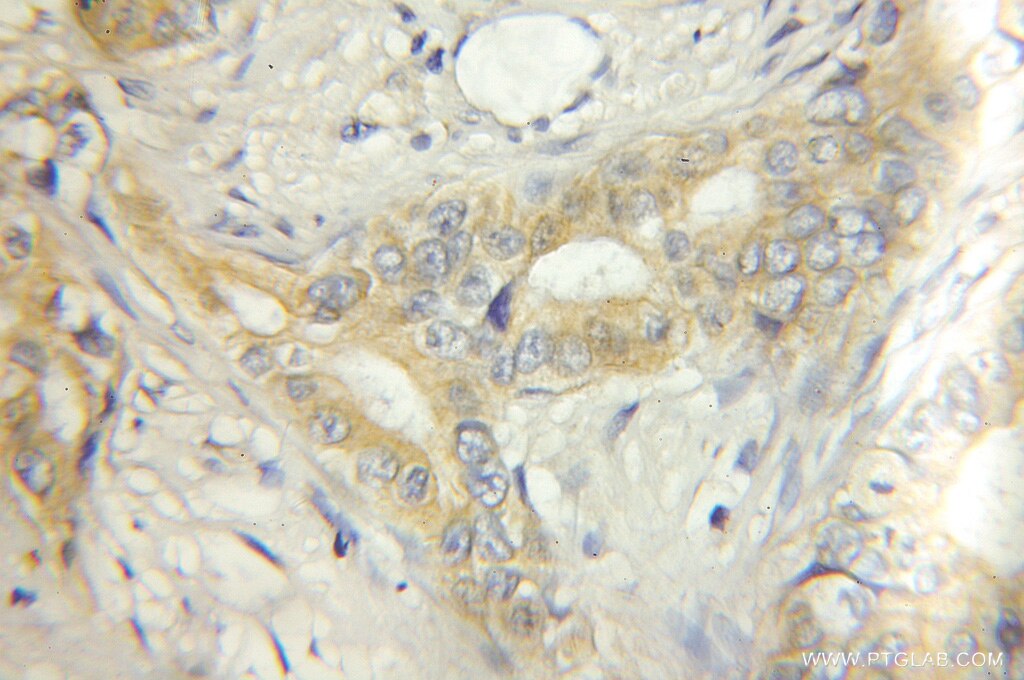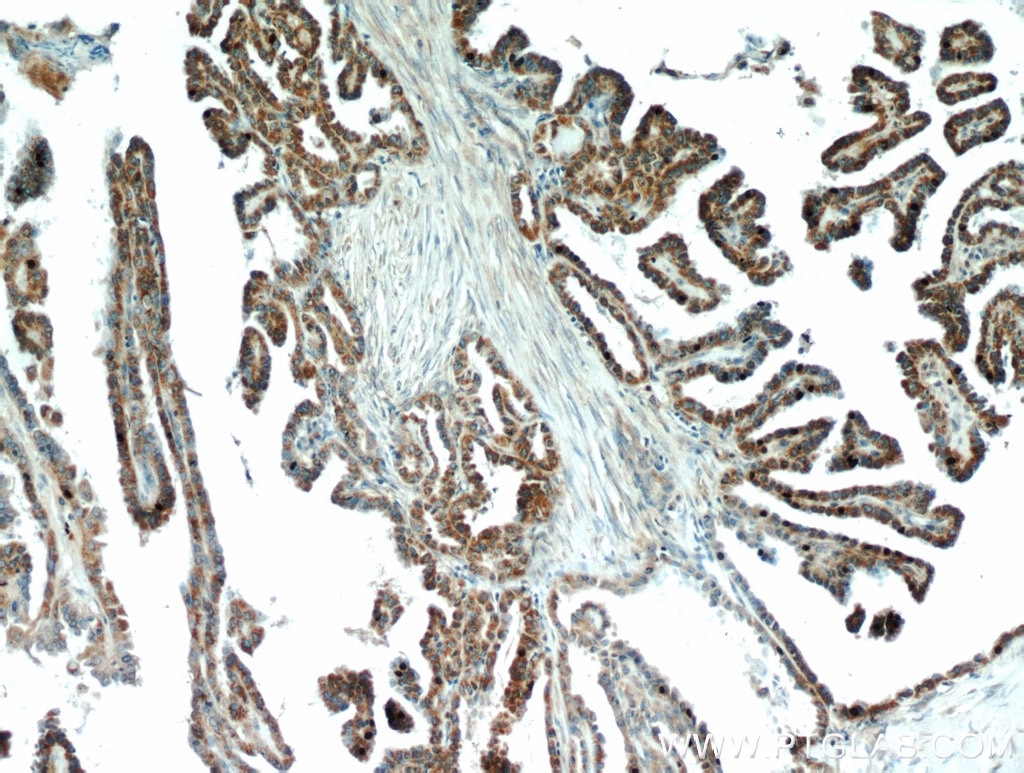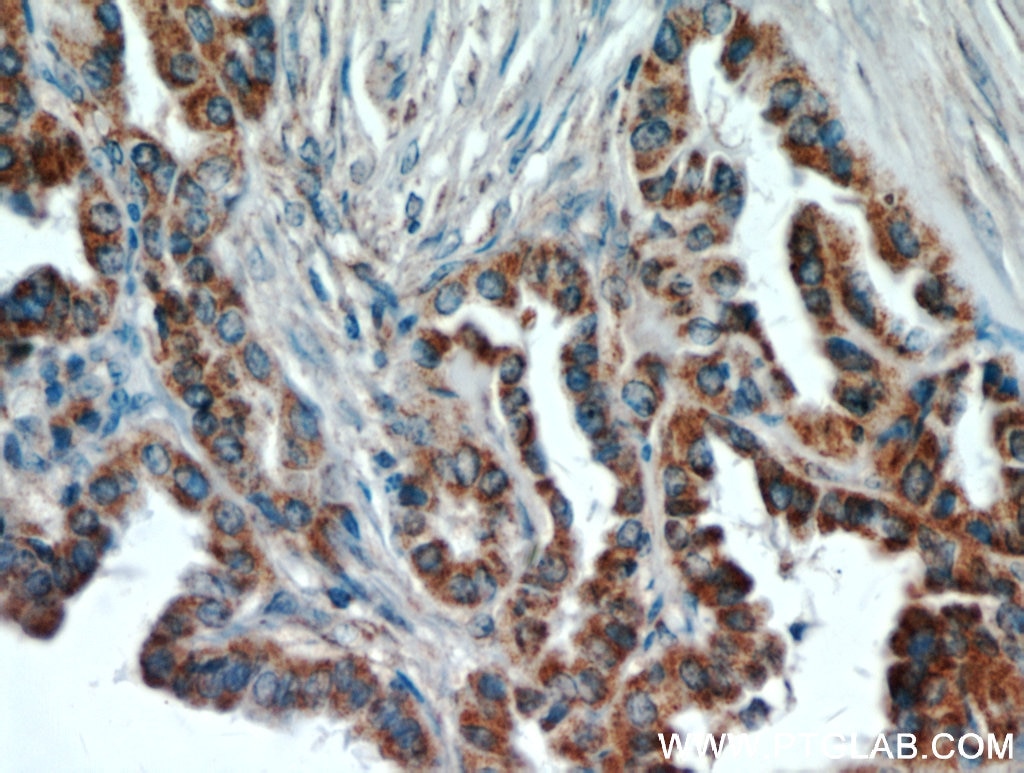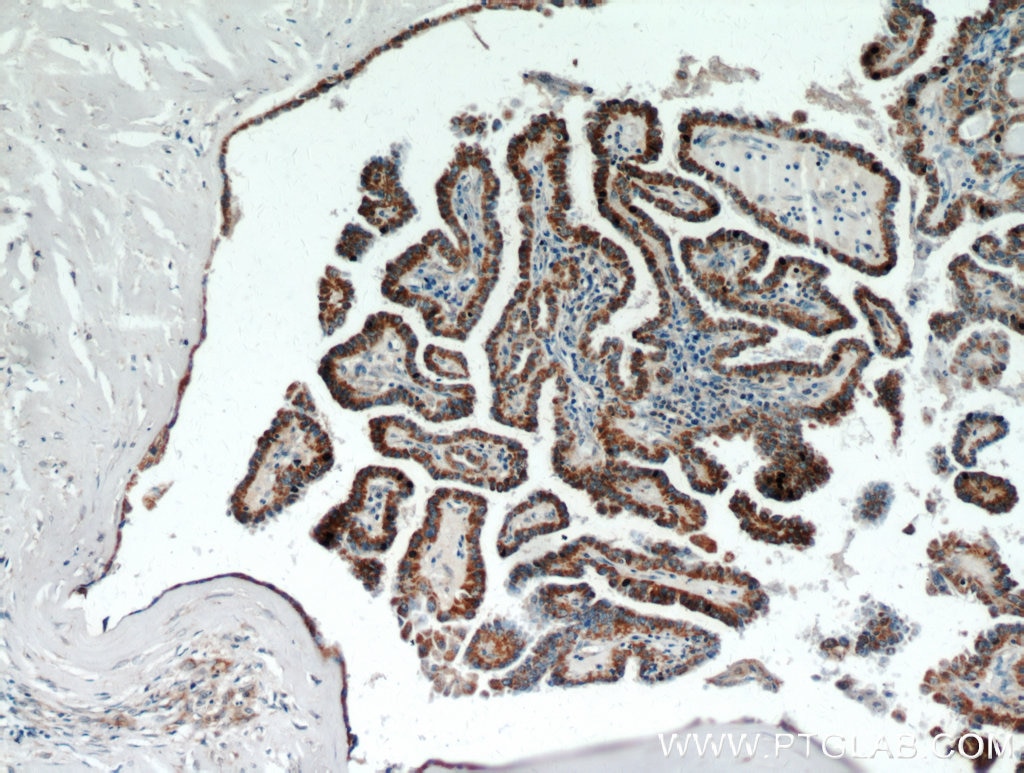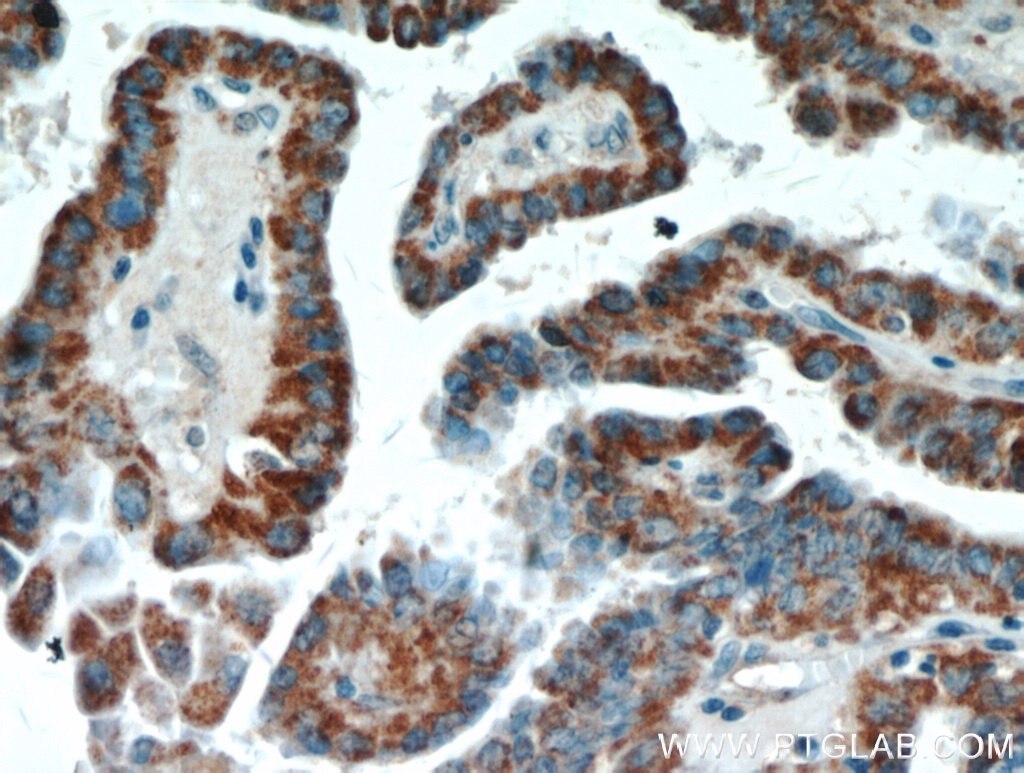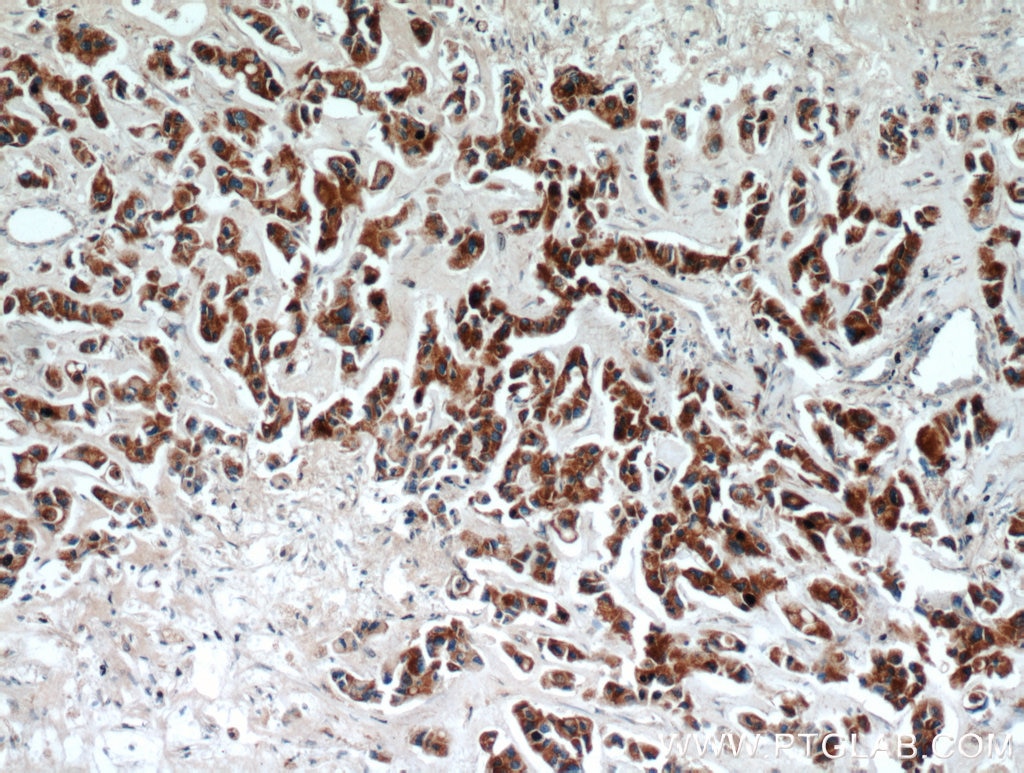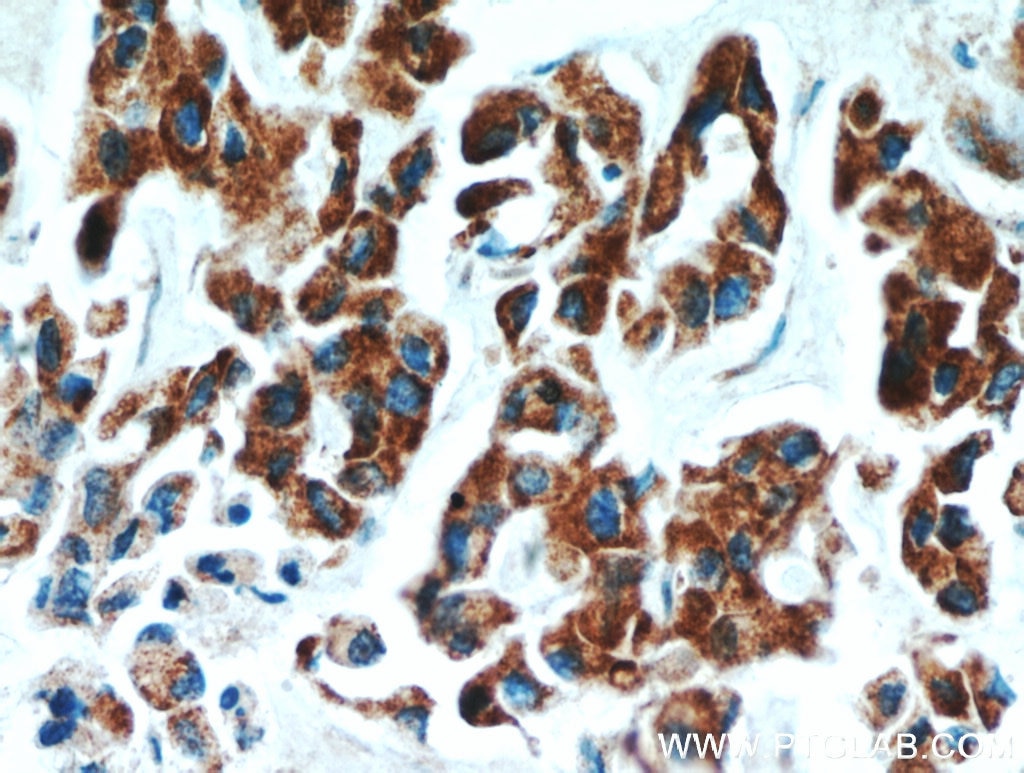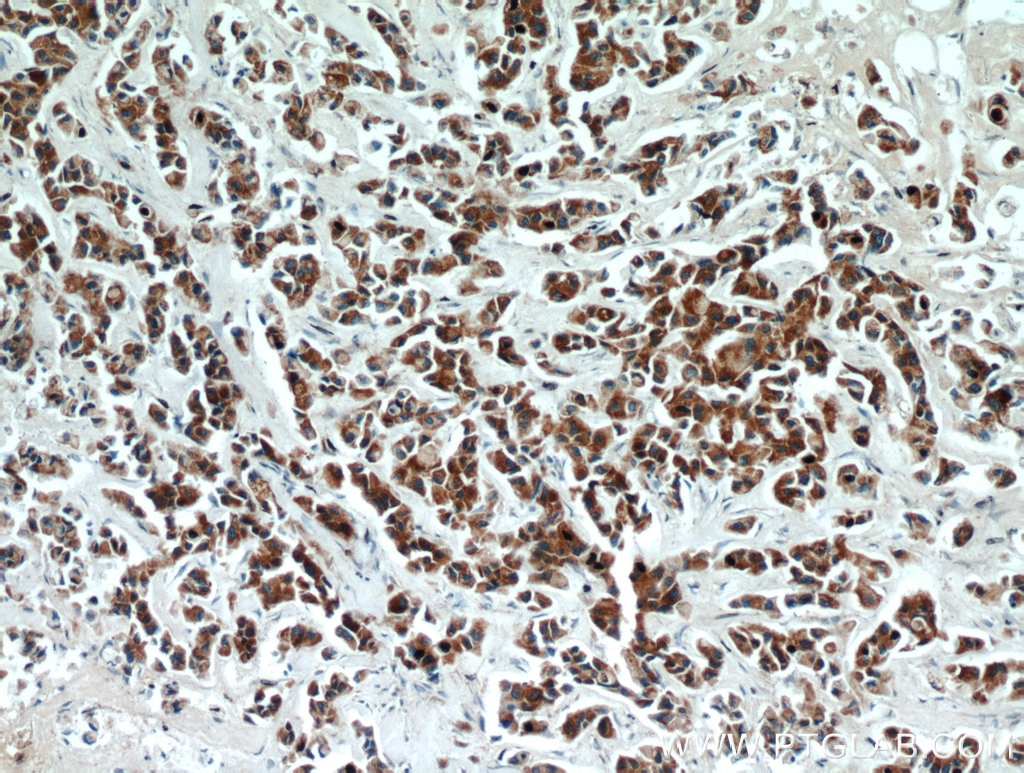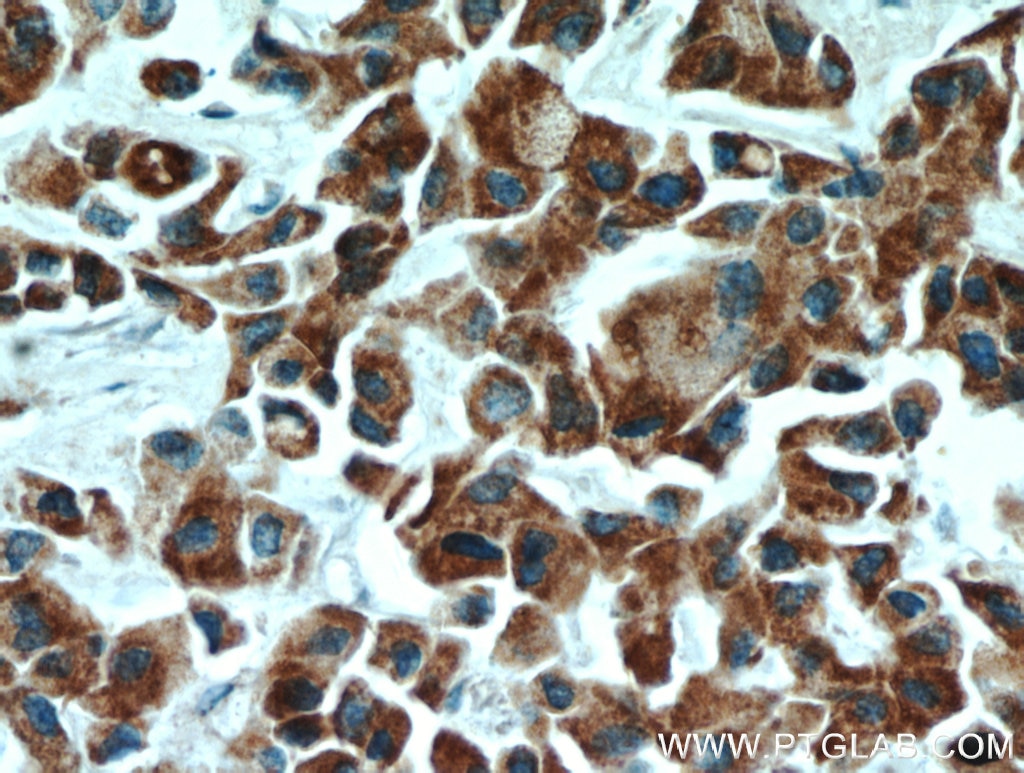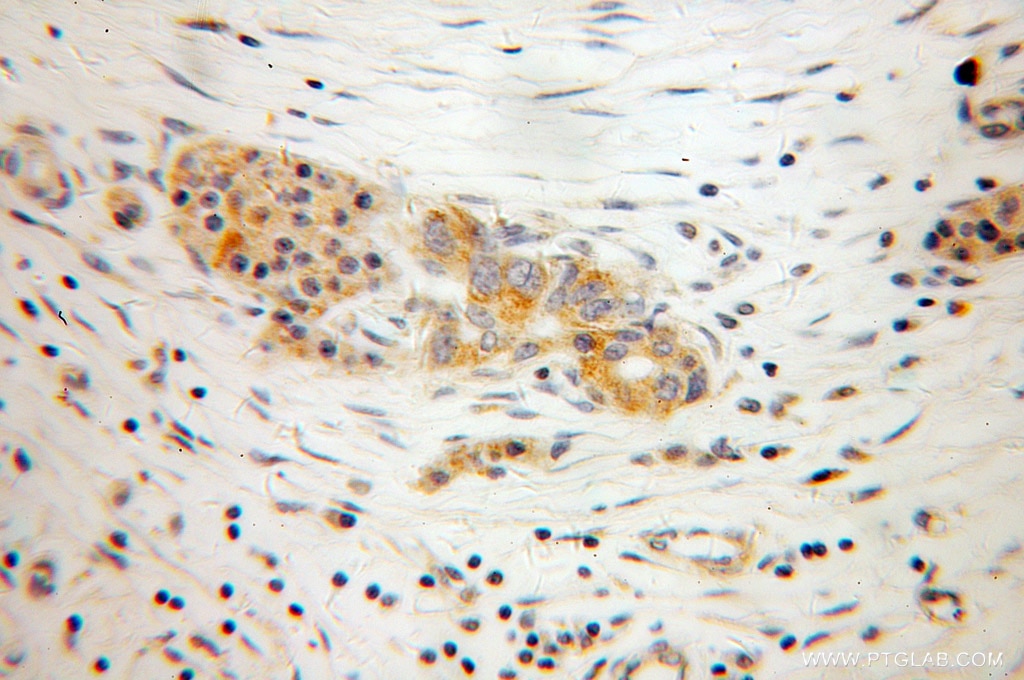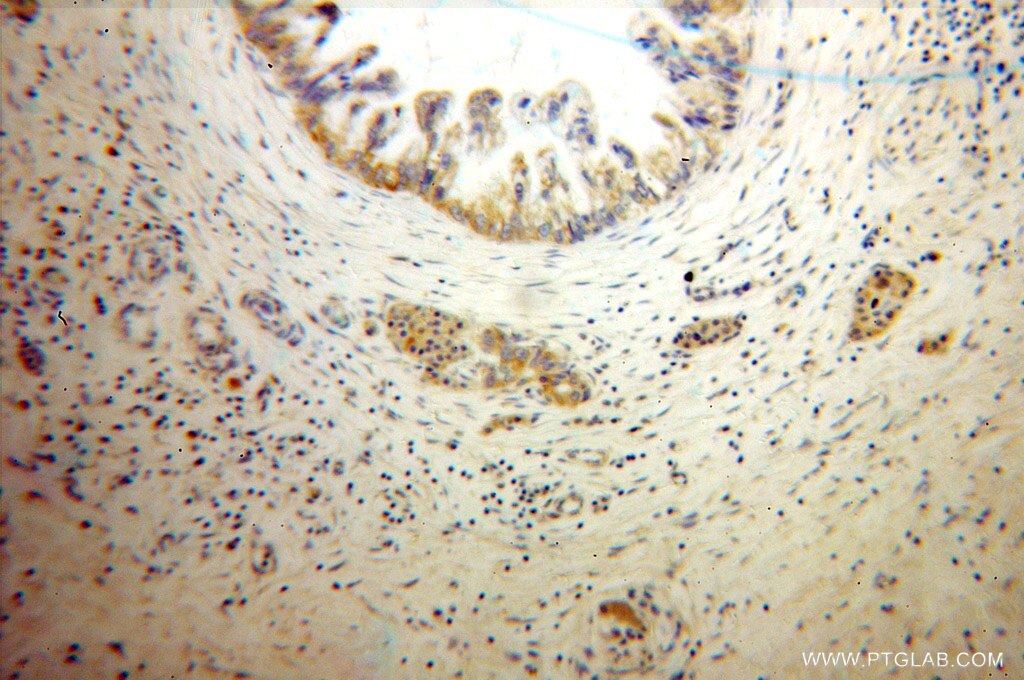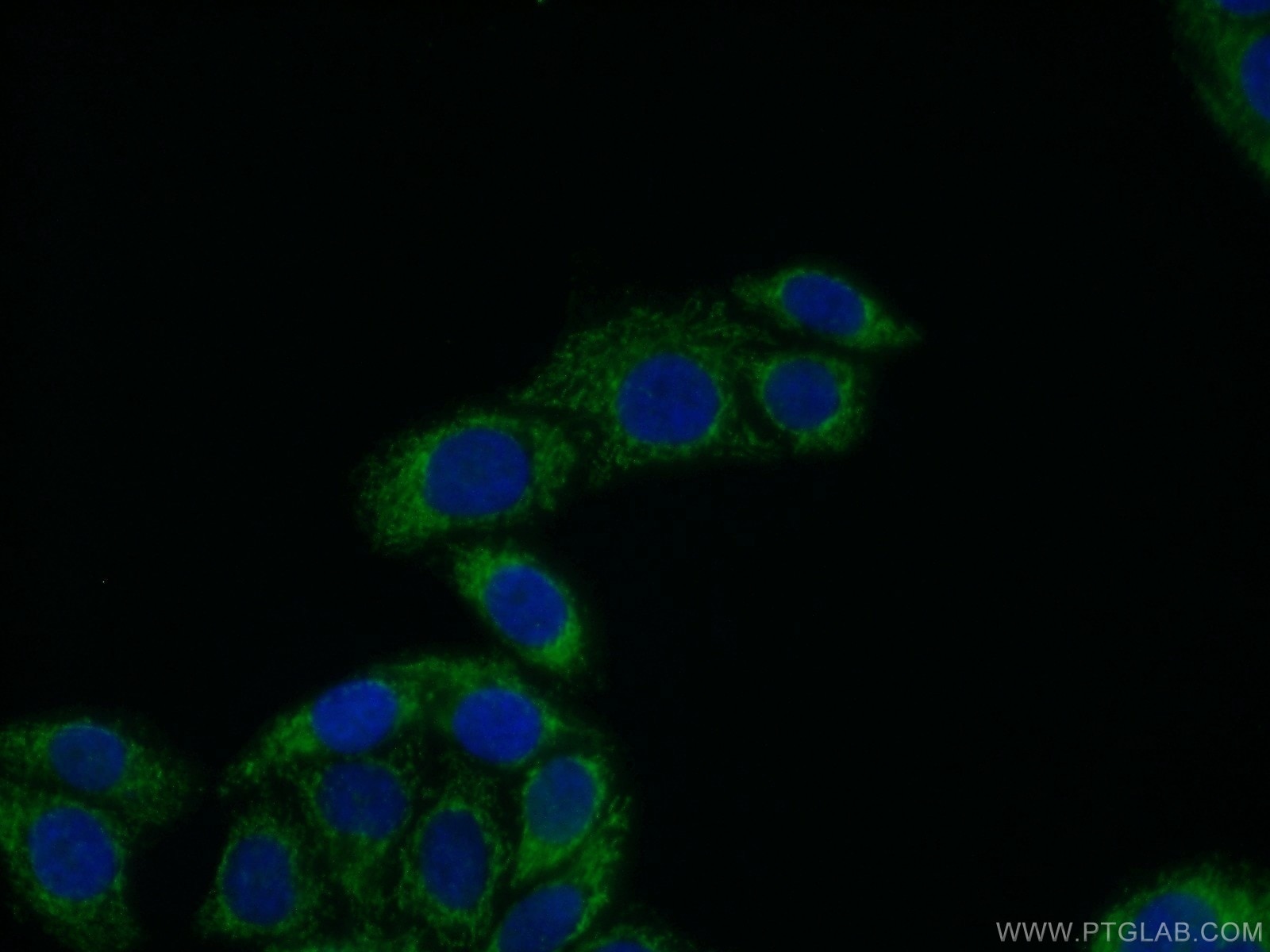ECM1 Polyklonaler Antikörper
ECM1 Polyklonal Antikörper für WB, IHC, IF/ICC, ELISA
Wirt / Isotyp
Kaninchen / IgG
Getestete Reaktivität
human, Maus, Ratte und mehr (1)
Anwendung
WB, IHC, IF/ICC, ELISA
Konjugation
Unkonjugiert
Kat-Nr. : 11521-1-AP
Synonyme
Galerie der Validierungsdaten
Geprüfte Anwendungen
| Erfolgreiche Detektion in WB | A549-Zellen, A375-Zellen, HepG2-Zellen, L02-Zellen, Mauslebergewebe, Mausnierengewebe, Maus-Pankreasgewebe, MCF-7-Zellen, Ratten-Pankreasgewebe |
| Erfolgreiche Detektion in IHC | humanes Schilddrüsenkarzinomgewebe, humanes Lungenkarzinomgewebe, humanes Mammakarzinomgewebe, humanes Pankreaskarzinomgewebe Hinweis: Antigendemaskierung mit TE-Puffer pH 9,0 empfohlen. (*) Wahlweise kann die Antigendemaskierung auch mit Citratpuffer pH 6,0 erfolgen. |
| Erfolgreiche Detektion in IF/ICC | HepG2-Zellen |
Empfohlene Verdünnung
| Anwendung | Verdünnung |
|---|---|
| Western Blot (WB) | WB : 1:500-1:2000 |
| Immunhistochemie (IHC) | IHC : 1:100-1:400 |
| Immunfluoreszenz (IF)/ICC | IF/ICC : 1:50-1:500 |
| It is recommended that this reagent should be titrated in each testing system to obtain optimal results. | |
| Sample-dependent, check data in validation data gallery | |
Veröffentlichte Anwendungen
| WB | See 11 publications below |
| IHC | See 11 publications below |
| IF | See 5 publications below |
Produktinformation
11521-1-AP bindet in WB, IHC, IF/ICC, ELISA ECM1 und zeigt Reaktivität mit human, Maus, Ratten
| Getestete Reaktivität | human, Maus, Ratte |
| In Publikationen genannte Reaktivität | human, Hund, Maus |
| Wirt / Isotyp | Kaninchen / IgG |
| Klonalität | Polyklonal |
| Typ | Antikörper |
| Immunogen | ECM1 fusion protein Ag2084 |
| Vollständiger Name | extracellular matrix protein 1 |
| Berechnetes Molekulargewicht | 540 aa, 61 kDa |
| Beobachtetes Molekulargewicht | 55-61 kDa |
| GenBank-Zugangsnummer | BC023505 |
| Gene symbol | ECM1 |
| Gene ID (NCBI) | 1893 |
| Konjugation | Unkonjugiert |
| Form | Liquid |
| Reinigungsmethode | Antigen-Affinitätsreinigung |
| Lagerungspuffer | PBS mit 0.02% Natriumazid und 50% Glycerin pH 7.3. |
| Lagerungsbedingungen | Bei -20°C lagern. Nach dem Versand ein Jahr lang stabil Aliquotieren ist bei -20oC Lagerung nicht notwendig. 20ul Größen enthalten 0,1% BSA. |
Hintergrundinformationen
Extracellular matrix protein 1 (ECM1) is a glycoprotein involved in a number of biological processes such as bone formation, skin differentiation, cell proliferation, and promotes angiostasis.ECM1 is expressed in breast cancer and could participate in cell migration and angiogenesis. Pathologically, ECM1 contributes to the formation and metastasis of several types of cancer including breast, thyroid and hepatocellular cancers.(PMID:21128013) It inhibits MMP9 proteolytic activity. ECM1 protein is a possible trigger for angiogenesis, tumor progression and malignancies(PMID:21497598).
Protokolle
| Produktspezifische Protokolle | |
|---|---|
| WB protocol for ECM1 antibody 11521-1-AP | Protokoll herunterladen |
| IHC protocol for ECM1 antibody 11521-1-AP | Protokoll herunterladen |
| IF protocol for ECM1 antibody 11521-1-AP | Protokoll herunterladen |
| Standard-Protokolle | |
|---|---|
| Klicken Sie hier, um unsere Standardprotokolle anzuzeigen |
Publikationen
| Species | Application | Title |
|---|---|---|
Dev Cell Spatial Control of Primary Ciliogenesis by Subdistal Appendages Alters Sensation-Associated Properties of Cilia. | ||
Oncogene Extracellular matrix protein 1 promotes cell metastasis and glucose metabolism by inducing integrin β4/FAK/SOX2/HIF-1α signaling pathway in gastric cancer. | ||
J Biol Chem Phospholipid scramblase 1 is secreted by a lipid raft-dependent pathway and interacts with the extracellular matrix protein 1 in the dermal epidermal junction zone of human skin. | ||
Am J Transl Res miR-23a-5p inhibits cell proliferation and invasion in pancreatic ductal adenocarcinoma by suppressing ECM1 expression. | ||
Food Chem Toxicol MiR-92a antagonized the facilitation effect of extracellular matrix protein 1 in GC metastasis through targeting its 3'UTR region. | ||
Matrix Biol ECM1 interacts with fibulin-3 and the beta 3 chain of laminin 332 through its serum albumin subdomain-like 2 domain. |
